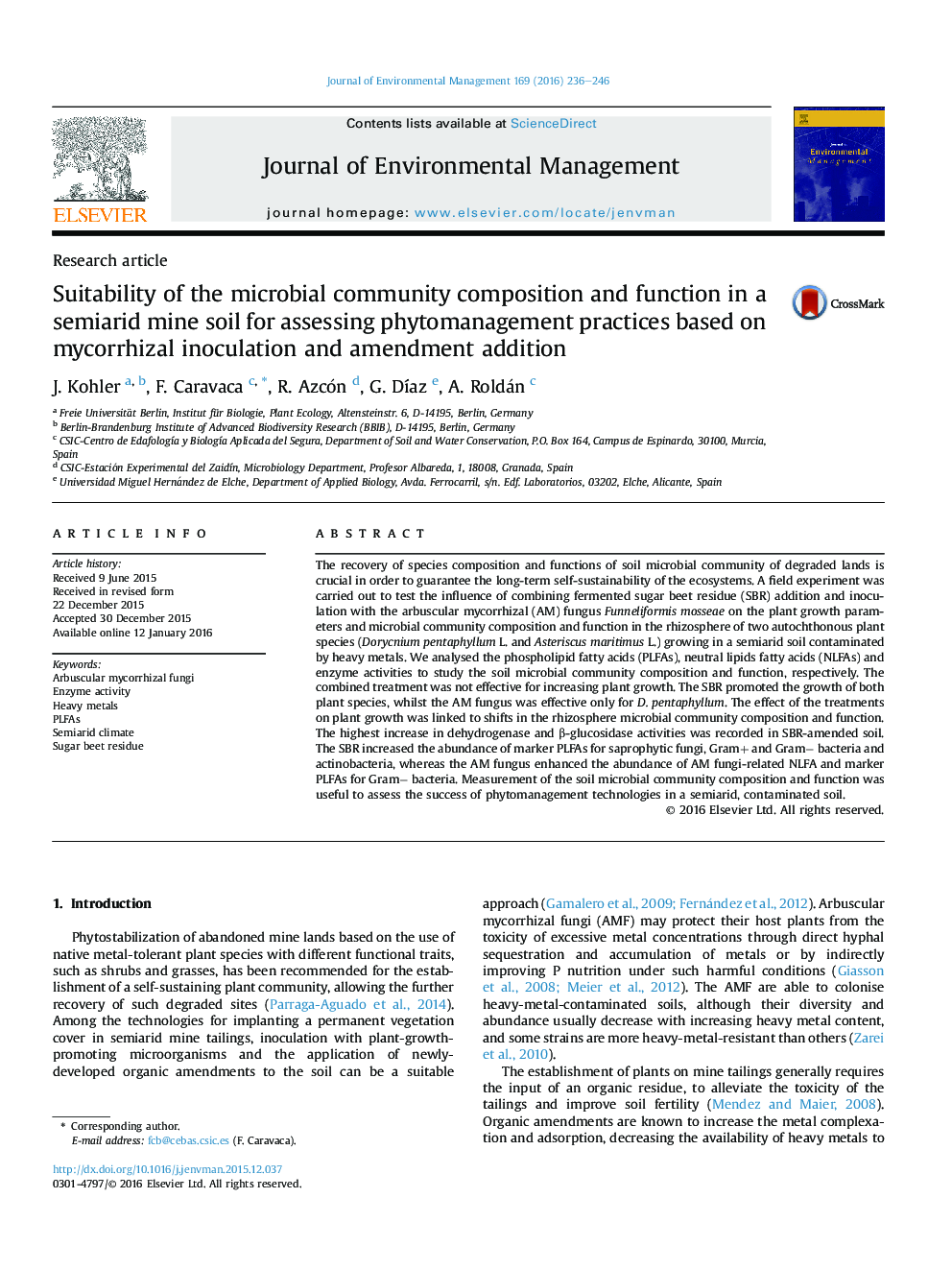| Article ID | Journal | Published Year | Pages | File Type |
|---|---|---|---|---|
| 1055454 | Journal of Environmental Management | 2016 | 11 Pages |
•Phytomanagement using fermented SBR and AMF was tested in field conditions.•The efficacy of fermented SBR and AMF to increase growth depended on plant species.•Amendment improved soil microbial function and nutrient concentrations.•Amendment increased the abundance of saprophytic fungi, bacteria and actinobacteria.•AMF enhanced the abundance of AM fungi-related NLFA and Gram− bacteria.
The recovery of species composition and functions of soil microbial community of degraded lands is crucial in order to guarantee the long-term self-sustainability of the ecosystems. A field experiment was carried out to test the influence of combining fermented sugar beet residue (SBR) addition and inoculation with the arbuscular mycorrhizal (AM) fungus Funneliformis mosseae on the plant growth parameters and microbial community composition and function in the rhizosphere of two autochthonous plant species (Dorycnium pentaphyllum L. and Asteriscus maritimus L.) growing in a semiarid soil contaminated by heavy metals. We analysed the phospholipid fatty acids (PLFAs), neutral lipids fatty acids (NLFAs) and enzyme activities to study the soil microbial community composition and function, respectively. The combined treatment was not effective for increasing plant growth. The SBR promoted the growth of both plant species, whilst the AM fungus was effective only for D. pentaphyllum. The effect of the treatments on plant growth was linked to shifts in the rhizosphere microbial community composition and function. The highest increase in dehydrogenase and β-glucosidase activities was recorded in SBR-amended soil. The SBR increased the abundance of marker PLFAs for saprophytic fungi, Gram+ and Gram− bacteria and actinobacteria, whereas the AM fungus enhanced the abundance of AM fungi-related NLFA and marker PLFAs for Gram− bacteria. Measurement of the soil microbial community composition and function was useful to assess the success of phytomanagement technologies in a semiarid, contaminated soil.
